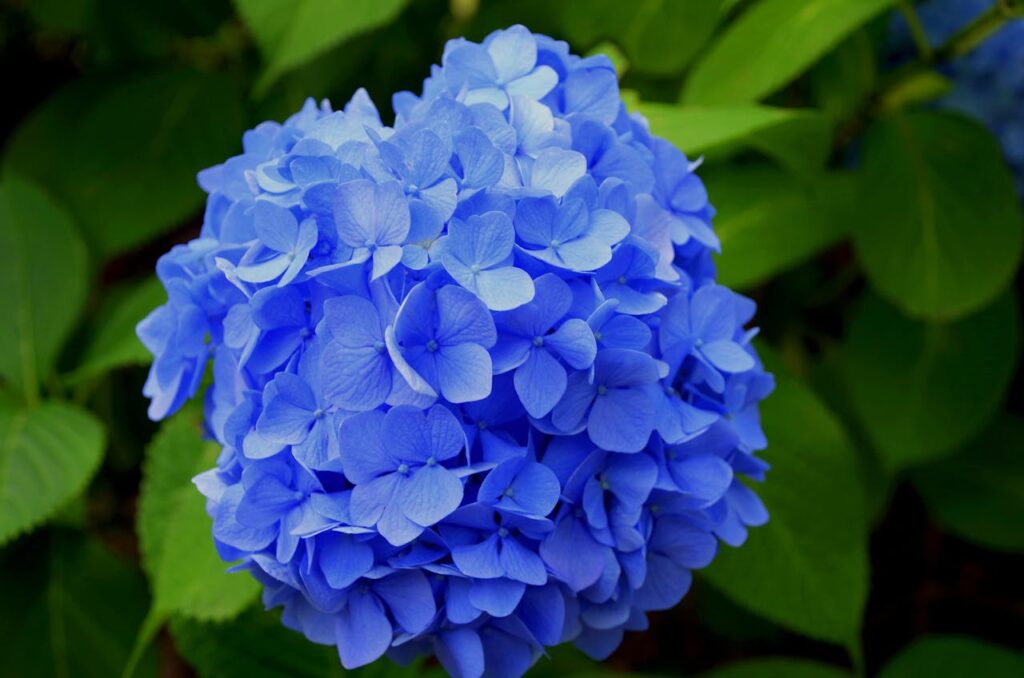Hydrangeas are stunning flowering shrubs that bring a touch of charm and sophistication to any garden. For gardening enthusiasts in New Jersey, you’re in for a treat – the Garden State’s climate is ideal for nurturing hydrangeas. In this detailed guide, we will explore the essential aspects of cultivating hydrangeas in New Jersey, providing valuable insights to help your garden flourish with these exquisite and versatile plants.
Understanding Hydrangea Varieties
Prior to commencing planting, it is essential to grasp the distinct hydrangea varieties and their individual traits. Among the prevalent types in New Jersey are:
Bigleaf Hydrangeas (Hydrangea macrophylla):
- Known for their large, showy blooms.
- Varied flower colors, including blue, pink, and purple, depending on soil pH.
- Two main varieties: mophead (globe-shaped flowers) and lacecap (flat, lacy blooms).
Panicle Hydrangeas (Hydrangea paniculata):
- Cone-shaped flower clusters that turn from white to pink as they mature.
- Tolerant of a wide range of soil conditions.
- Popular varieties include ‘Limelight’ and ‘PeeGee.’
Smooth Hydrangeas (Hydrangea arborescens):
- Known for their large, round blooms.
- Hardy and adaptable, thriving in various soil types.
- ‘Annabelle’ is a well-loved smooth hydrangea variety.
Oakleaf Hydrangeas (Hydrangea quercifolia):
- Distinctive oak-shaped leaves and cone-shaped flower clusters.
- Foliage changes color in the fall.
- Adaptable to New Jersey’s climate.
Choosing the Right Location
Hydrangeas flourish in soil that is well-drained and receives ample sunlight. When choosing a spot, take the following into account:
- Sunlight: Most hydrangeas prefer morning sun and afternoon shade, especially in the hotter months. In New Jersey, a location with filtered sunlight or dappled shade is ideal.
- Soil Quality: Ensure your soil is well-drained and rich in organic matter. Hydrangeas generally prefer slightly acidic to neutral soil.
Planting Hydrangeas
Follow these steps for successful hydrangea planting:
Digging the Hole:
- Dig a hole twice as wide as the hydrangea’s root ball.
- The depth of the hole should be the same as the root ball.
Amending the Soil:
- Mix in organic matter such as compost or well-rotted manure to enhance soil fertility.
Placing the Hydrangea:
- Position the hydrangea in the center of the hole, ensuring the top of the root ball is level with the soil surface.
Backfilling:
- Fill the hole with soil and water thoroughly to eliminate air pockets.
Mulching:
- Apply a layer of mulch around the base of the plant to conserve moisture and suppress weeds.
Watering and Maintenance
Hydrangeas require consistent moisture, especially during dry spells. Follow these guidelines:
Watering:
- Water deeply and regularly, especially during the plant’s establishment period.
- Avoid waterlogged conditions, as this can lead to root rot.
Fertilizing:
- Feed hydrangeas with a balanced, slow-release fertilizer in early spring.
- Consider supplementing with a phosphorus-rich fertilizer to encourage bloom development.
Pruning:
- Prune selectively to shape the plant and remove dead or weak wood.
- Avoid heavy pruning, as this can reduce flowering.
Winter Protection:
- Apply a layer of mulch around the base of the plant in late fall to insulate the roots during winter.
Dealing with Soil pH:
The color of bigleaf hydrangea blooms is influenced by soil pH. To achieve the desired color:
Blue Blooms:
- Acidic soil (pH 5.5 or lower) encourages blue hues.
- Amend the soil with aluminum sulfate to lower pH.
Pink Blooms:
- Alkaline soil (pH 6.5 or higher) promotes pink tones.
- Add lime to increase pH.
A retail nursery in New Jersey or online garden store can provide a soil pH testing kit.
In short, cultivating hydrangeas can be a fulfilling endeavor that demands attention and expertise. By familiarizing yourself with various species, selecting optimal planting spots, and adhering to correct care methods, you can relish stunning hydrangea blossoms in your garden all summer long. With a bit of extra attention, you can even customize the bloom colors to your liking. Happy gardening!



